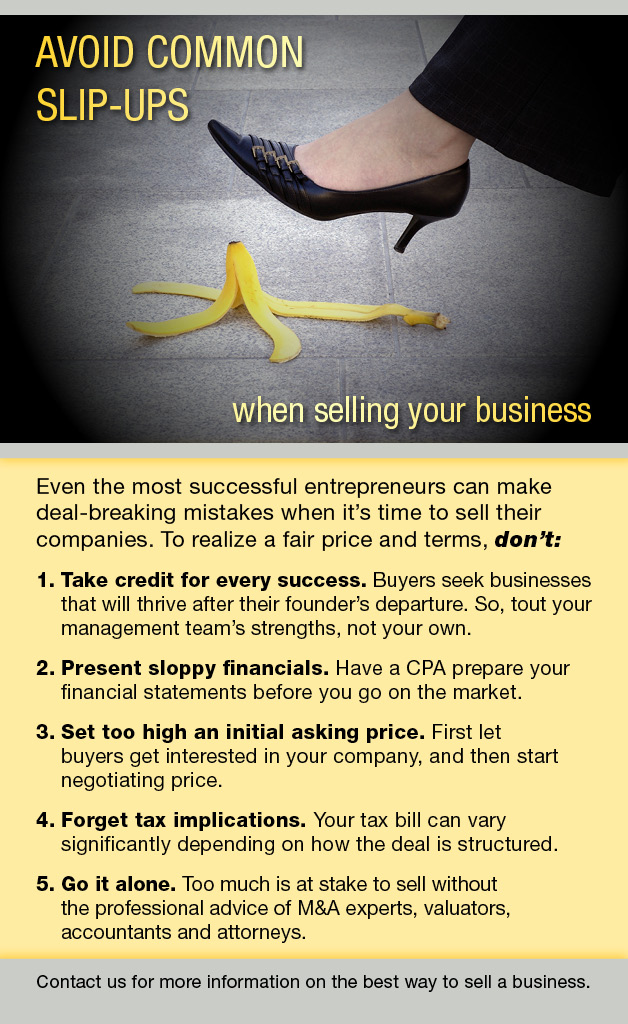
October 1, 2019
- Deadline for self-employed persons or small employers to establish a SIMPLE-IRA
October 15, 2019
- Final extended deadline to file individual tax returns for the year 2018 (Form 1040)
- Last day the IRS will accept an electronically filed tax return for the year 2018. If you’re filing after this date, you’ll have to mail in your tax return for processing.
- Final deadline to fund a SEP-IRA or solo 401(k) for tax year 2018 if you requested an automatic extension of time to file.
Like most business owners, you’ve probably been urged by industry experts and professional advisors to identify the most important key performance indicators (KPIs) for your company. So, just for the sake of discussion, let’s say you’ve done that. A natural question that often follows is: Now what? You know you’re supposed to keep an eye on these metrics every day but … how?
The right technology has you covered. There’s a specific type of software — commonly referred to as a “business dashboard” — that allows business owners to create customized views of all their chosen KPIs. And these applications don’t just lay out numbers like a spreadsheet. They provide an easy visual experience that allows you to keep your eyes on the prize: a cost-controlled, profitable company.
Cloud-based knowledge
Business dashboards have been around for a decade or two in various forms. But today’s solutions have the advantage of being cloud-based, meaning the data driving them is typically stored on a secure server off-site. And you can access the dashboard from anywhere at any time on an authenticated device. (You can also still run a dashboard from your company’s own servers, if you prefer.)
If you’ve never used a dashboard before, you might wonder what one looks like. The name says it all. Ideally, a dashboard is a single screen of data — like the panel of gauges in your car — that displays various KPIs in the form of pie charts, bar graphs and other graphic elements.
A few must-haves
When shopping for a product, there are a few “must-haves” to insist on. The software should:
- Support your chosen KPIs,
- Present itself in a visually pleasing, logical manner that allows you to easily, intuitively follow those KPIs, and
- Update itself in real time, enabling you to react quickly to sudden swings in your company’s financial performance.
Be wary of vendors that over-promise “otherworldly” knowledge of your industry or try to upsell you on bells and whistles. The simpler the dashboard, the better. There will always be more complex financial issues regarding your business that can’t be put into simple terms on a dashboard.
Also, the rise of artificial intelligence (AI) is causing many to question the long-term viability of business dashboards. AI gathers and shapes data so quickly, and in such massive amounts, that some experts argue that a business owner’s chosen KPIs can rapidly become outmoded.
Nonetheless, dashboard software is still widely used in many industries. Just be prepared to regularly reassess and, if necessary, update your KPIs.
Shop carefully
If you decide to invest in a business dashboard (or upgrade your current one), you’ll need to go about it carefully. We can help you set a budget and compare prices and functionalities to get an optimal return on investment.
Many business owners reach a point where managing the financial side of the enterprise becomes overwhelming. Usually, this is a good thing — the company has grown to a point where simple bookkeeping and basic financial reporting just don’t cut it anymore.
If you can relate to the feeling, it may be time to add a CFO or controller. But you’ve got to first consider whether your payroll can take on this generally high-paying position and exactly what you’d get in return.
The broad role
A CFO or controller looks beyond day-to-day financial management to do more holistic, big-picture planning of financial and operational goals. He or she will take a seat at the executive table and serve as your go-to person for all matters related to your company’s finances and operations.
A CFO or controller goes far beyond merely compiling financial data. He or she provides an interpretation of the data to explain how financial decisions will impact all areas of your business. And this individual can plan capital acquisition strategies, so your company has access to financing, as needed, to meet working capital and operating expenses.
In addition, a CFO or controller will serve as the primary liaison between your company and its bank to ensure your financial statements meet requirements to help negotiate any loans. Analyzing possible merger, acquisition and other expansion opportunities also falls within a CFO’s or controller’s purview.
Specific responsibilities
A CFO or controller typically has a set of core responsibilities that link to the financial oversight of your operation. This includes making sure there are adequate internal controls to help safeguard the business from internal fraud and embezzlement.
The hire also should be able to implement improved cash management practices that will boost your cash flow and improve budgeting and cash forecasting. He or she should be able to perform ratio analysis and compare the financial performance of your business to benchmarks established by similar-size companies in the same geographic area. And a controller or CFO should analyze the tax and cash flow implications of different capital acquisition strategies — for example, leasing vs. buying equipment and real estate.
Major commitment
Make no mistake, hiring a full-time CFO or controller represents a major commitment in both time to the hiring process and dollars to your payroll. These financial executives typically command substantial high salaries and attractive benefits packages.
So, first make sure you have the financial resources to commit to this level of compensation. You may want to outsource the position. No matter which route you choose, our firm can help you assess the financial impact of the idea.
Many businesses struggle to turn abstract strategic-planning ideas into concrete, actionable plans. One reason why is simple: ineffective meetings. The ideas are there, lurking in the minds of management and key employees, but the process for hashing them out just doesn’t work. Here are a few ways to run your strategic-planning meetings like they really matter — which, of course, they do.
Build buy-in
Meetings often fail because attendees feel more like spectators than participants. They are less likely to zone out if they have some say in the direction and content of the gathering. So, before the session, touch base with those involved and establish a clear agenda of the strategic-planning initiatives you’ll be discussing.
Another common problem with meetings occurs when someone leads the meeting, but no one owns it. As the meeting leader, be sure to speak with conviction and express positivity (if not passion) for the subject matter. (If others are delivering presentations during the proceedings, encourage them to do the same.)
Fight fatigue
To the extent possible, keep meetings short. Cover what needs to be covered, but ensure you’re concentrating only on what’s important. Go in armed with easy-to-follow notes so you’ll stay on track and won’t forget anything. The latter point is particularly important, because overlooked subjects often lead to hasty follow-up meetings that can frustrate employees.
In addition, if the contingent of attendees is large enough, consider having employees break out into smaller groups to focus on specific points. Then call the meeting back to order to discuss each group’s ideas. By mixing it up in such creative ways, you’ll keep employees more engaged.
Tell a story
There’s so much to distract employees in a meeting. If it’s held in the morning, the busy day ahead may preoccupy their thoughts. If it’s an afternoon meeting, they might grow anxious about their commutes home. If the meeting is a Web conference, there are a variety of distractions that may affect them. And there’s no getting around the ease with which participants can sneak peeks at their smartphones (or smart watches) to check emails, texts and the Internet.
How do you break through? People appreciate storytellers. So, think about how you can use this technique to find a more relaxed and engaging way to speak to everyone in the room. Devise a narrative that will grab attendees’ attention and keep them in suspense for a little bit. Then deliver a conclusion that will inspire them to work toward identifying fully realized, feasible strategic goals.
Make ’em great
Grumbling about meetings can be as much a part of working life as burnt coffee in the bottom of the breakroom pot. But don’t let this occasional negativity sway you from doing the critical strategic planning that every business needs to do. Your meetings can be great ones. We can’t help you run them, but we can assist you in assessing the financial feasibility and ramifications of your strategic plans.
Mutual funds are so common these days that many people overlook the tax considerations involved. Here are some tips on how to be tax-smart with these investment vehicles.
Avoid year-end investments
Typically, mutual funds distribute accumulated dividends and capital gains toward the end of the year. It’s generally wise to avoid investing in a fund shortly before such a distribution. Why? Because you’ll end up paying taxes on gains you didn’t share in.
Don’t fall for the common misconception that investing in a fund just before a distribution date is like getting “free money.” True, you’ll receive a year’s worth of income right after you invest, but the value of your shares will immediately drop by the same amount, so you won’t be any better off. Plus, you’ll be liable for taxes on the distribution as if you had owned your shares all year.
You can get a general idea of when a fund anticipates making a distribution by checking its website periodically. It’s also important to make a note of the “record date” — because investors who own shares of the fund on that date participate in the distribution.
Invest in tax-efficient funds
When it comes to tax efficiency, not all funds are created equal. Actively managed funds tend to be less tax efficient — that is, they buy and sell securities more frequently, generating a greater amount of capital gains, much of it short-term gains taxable at ordinary-income rates. To reduce your tax liability, consider investing in tax-efficient funds, such as index funds, which generally have lower turnover rates, and “passively managed” funds (sometimes described as “tax managed” funds), which are designed to minimize taxable distributions.
Another option is exchange-traded funds (ETFs). Unlike mutual funds, which generally redeem shares by selling securities, ETFs are often able to redeem securities “in kind” — that is, to swap them for other securities. This limits an ETF’s recognition of capital gains, making it more tax efficient.
But don’t ignore tax-inefficient funds
Tax-inefficient funds may have a place in your portfolio. In some cases, actively managed funds may offer benefits, such as above-market returns, that outweigh their tax costs.
If you invest in actively managed or other tax-inefficient funds, ideally you should hold them in nontaxable accounts, such as traditional IRAs or 401(k) plan accounts. Because earnings in these accounts are tax-deferred, distributions from funds they hold won’t have any tax consequences until you withdraw them. And if the funds are held in a Roth account, qualifying distributions will escape taxation altogether.
Make no assumptions
It’s important to do your due diligence on mutual funds. Don’t assume that a fund that historically has been tax efficient will stay that way in the future. Feel free to contact our firm for help.
Sidebar: Reinvested distributions can lead to double taxation
Many investors elect to have their distributions automatically reinvested in their mutual funds. But it’s important to remember that those distributions are taxable regardless of whether they’re reinvested or paid out in cash.
Reinvested distributions increase your cost basis in a fund, so it’s critical to track your basis carefully to avoid double taxation. If you fail to account for these distributions, you could end up paying tax on them twice — once when they’re paid and again when you sell your shares in the fund.
“Gamification.” It’s perhaps an odd word, but it’s a cool concept that’s become popular among many types of businesses. In its most general sense, the term refers to integrating characteristics of game-playing into business-related tasks to excite and engage the people involved.
Might it have a place in your company?
Internal focus
Sometimes gamification refers to customer interactions. For example, a retailer might award customers points for purchases that they can collect and use toward discounts. Or a company might offer product-related games or contests on its website to generate traffic and visitor engagement.
But, these days, many businesses are also using gamification internally. That is, they’re using it to:
- Engage employees in training processes,
- Promote friendly competition and camaraderie among employees, and
- Ease the recognition and measurement of progress toward shared goals.
It’s not hard to see how creating positive experiences in these areas might improve the morale and productivity of any workplace. As a training tool, games can help employees learn more quickly and easily. Moreover, with the rise of social media, many workers are comfortable sharing with others in a competitive setting. And, from the employer’s perspective, gamification opens all kinds of data-gathering possibilities to track training initiatives and measure employee performance.
Specific applications
In most businesses, employee training is a big opportunity to reap the benefits of gamification. As many industries look to attract Generation Z — the next big demographic to enter the workforce — game-based learning makes perfect sense for individuals who grew up both competing in various electronic ways on their mobile devices and interacting on social media.
For example, safety and sensitivity training are areas that demand constant reinforcement. But it’s also common for workers to tune out these topics. Framing reminders, updates and exercises within game scenarios, in which participants might win or lose ground by following proper or improper work practices, is one way to liven up the process.
Game-style simulations can also help prepare employees for management or leadership roles. Online training simulations, set up as games, can test participants’ decision-making and problem-solving skills — and allow them to see the potential consequences of various actions before granting them such responsibilities in the real-word situations. You might also consider rewards-based games for managers or project leaders based on meeting schedules, staying within budgets, or preventing accidents or other costly mistakes.
Intended effects
Naturally, gamification has its risks. You don’t want to “force fun” or frustrate employees with unreasonably difficult games. Doing so could lower morale, waste time and money, and undercut training effectiveness.
To mitigate the downsides, involve management and employees in gamification initiatives to ensure you’re on the right track. Also consider involving a professional consultant to implement established and tested “gamified” exercises, tasks and contests. We can help you identify and assess the potential costs involved and keep those costs in line.
Accounting software typically sells itself as much more than simple spreadsheet or ledger. The products tend to pride themselves on being comprehensive accounting information systems — depending on the price point, of course.
So, is your accounting software living up to the hype? If not, there are a couple of relatively simple steps you can take to improve matters.
Train and retrain
Many businesses grow frustrated with their accounting software packages because they haven’t invested enough time to learn their full functionality. When your personnel are truly up to speed, it’s much easier for them to standardize reports to meet your company’s needs without modification. Doing so not only reduces input errors, but also provides helpful financial information at any point during the year — not just at month end.
Along the same lines, your company should be able to perform standard journal entries and payroll allocations automatically within your accounting software. Many systems can recall transactions and automate, for example, payroll allocations to various programs or vacation accrual reports. If you’re struggling to extract and use these types of financial information, you might be underusing your accounting software (or it might be time for an upgrade).
Ideally, a champion on your staff may be able to step up and share his or her knowledge with others to get them up to speed. Otherwise, you could explore the cost of engaging an external consultant to review your software’s functionality and retrain staff on its basic features, as well as the many shortcuts and advanced features available.
Commit to continuous improvement
Accounting systems that aren’t monitored can become inefficient over time. Encourage employees to be on the lookout for labor-intensive steps that could be better automated, along with processes that don’t add value and might be eliminated. Also, note any unusual activity and look for transactions being improperly reported — remember the old technological adage, “garbage in, garbage out.”
Leadership plays an important role, too. Ownership and management are ultimately responsible for your company’s overall financial oversight. Periodically review critical documents such as monthly bank statements, financial statements and accounting entries. Look for vague items, errors or anomalies and then determine whether misuse of your accounting system may be to blame.
Take the time
Many businesses don’t even realize they have a problem with their accounting software until they take the time to evaluate and improve it. And only then does the system finally deliver on the hype — sometimes. Our firm can help you review your accounting software and ensure it’s delivering the information you need to make good business decisions.
Imagine giving your company’s retirement plan a report card. Would it earn straight A’s in preparing your participants for their golden years? Or is it more of a C student who could really use some extra help after school? Benchmarking can tell you.
Mind the basics
More than likely, you already use certain criteria to benchmark your plan’s performance using traditional measures such as:
- Fund investment performance relative to a peer group,
- Breadth of fund options,
- Benchmarked fees, and
- Participation rates and average deferral rates (including matching contributions).
These measures are all critical, but they’re only the beginning of the story. Add to that list helpful administrative features and functionality — including auto-enrollment and auto-escalation provisions, investment education, retirement planning, and forecasting tools. In general, the more, the better.
Don’t overlook useful data
A sometimes-overlooked plan metric is average account balance size. This matters for two reasons. First, it provides a first-pass look at whether participants are accumulating meaningful sums in their accounts. Naturally, you’ll need to look at that number in light of the age of your workforce and how long your plan has been in existence. Second, it affects recordkeeping fees — higher average account values generally translate into lower per-participant fees.
Knowing your plan asset growth rate is also helpful. Unless you have an older workforce and participants are retiring and rolling their fund balances into IRAs, look for a healthy overall asset growth rate, which incorporates both contribution rates and investment returns.
What’s a healthy rate? That’s a subjective assessment. You’ll need to examine it within the context of current financial markets. A plan with assets that shrank during the financial crisis about a decade ago could hardly be blamed for that pattern. Overall, however, you might hope to see annual asset growth of roughly 10%.
Keep participants on track
Ultimately, however, the success of a retirement plan isn’t measured by any one element, but by aggregating multiple data points to derive an “on track to retire” score. That is, how many of your plan participants have account values whose size and growth rate are sufficient to result in a realistic preretirement income replacement ratio, such as 85% or more?
It might not be possible to determine that number with precision. Such calculations at the participant level, sometimes performed by recordkeepers, involve sophisticated guesswork with respect to participants’ retirement ages and savings outside the retirement plan, as well as their income growth rates and the long-term rates of return on their investment accounts.
Ask for help
Given the importance of strong retirement benefits in hiring and retaining the best employees, it’s worth your while to regularly benchmark your plan’s performance. For better or worse, doing so isn’t as simple as 2+2. Our firm can help you choose the relevant measures, gather the data, perform the calculations and, most important, determine whether your retirement plan is really making the grade.










